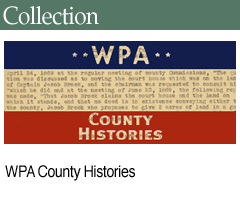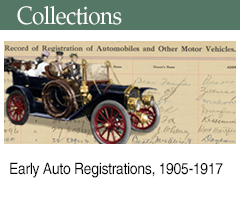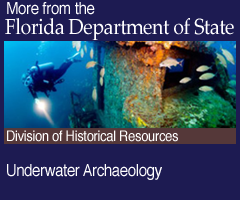Florida Merchant Marine Survey, 1936-1939
About These Documents
These records document the work of the Florida Merchant Marine Survey, a project funded by the Works Progress Administration (WPA) during the Great Depression. The object of the survey was to trace the history of shipping and shipbuilding in Florida using information about both actively serving and defunct vessels. Federal funding for the survey ended in 1939 before the survey could be published as a book, but the incomplete manuscript and a significant amount of data regarding historic watercraft in Florida were transferred to the State Library, which later transferred the records to the State Archives.
Use the search panel to look for specific vessels or vessels built or used at specific locations around the state. The search panel can also help you find boats associated with specific owners, shipbuilders or captains. You can also browse the collection's five major sections, including:
Background
The Florida Merchant Marine Survey began as part of a larger project, the Historic American Merchant Marine Survey, which was sponsored by the Smithsonian Institute and funded by the WPA from April 1936 to October 1937. This was one of many programs the WPA funded in an effort to provide employment for the many Americans unemployed or underemployed as a result of the Great Depression. The idea for a merchant marine survey came from Eric J. Steinlein, a traveling salesman, who had developed a keen interest in sailing vessels and boatbuilding. In 1935, he approached Frank Taylor, curator of the Smithsonian's Watercraft Collection, with a plan to conduct a detailed study of historic watercraft along the United States coastline. Taylor agreed to have the Smithsonian sponsor the project and serve as the final repository for the survey's findings.
The Florida portion of the Historic American Merchant Marine Survey began in 1936 with engineer H. Leighton Long of Jacksonville as its director. Field offices were established at Miami, Jacksonville, Tampa and Pensacola, with another opening later in Key West. About 50 workers staffed the project at its peak, but that number dropped to 15 toward the end of 1936. Still, the Florida crew surveyed more than 50 vessels, a significant portion of the 426 total surveys completed nationwide.
Federal funding for the survey ended in October 1937, but H. Leighton Long was able to keep the Florida portion of the work going by convincing the Florida division of the Federal Writers' Project (FWP) to adopt it as one of their own programs. The State Library Board, headed at that time by Harold Colee, president of the Florida State Chamber of Commerce, replaced the Smithsonian as the sponsor. Work continued under this new arrangement until June 1, 1939, when FWP funding for the survey ran out. The staff applied for a six-month extension of the program, with endorsements from Colee and some of Florida's representatives in Congress, but to no avail.
Philip Ayer Sawyer
The Florida Merchant Marine Survey had hoped to convert their extensive fieldwork into a full-length book on the maritime history of the state, including a series of rich illustrations sketched by artist Philip Ayer Sawyer. A Chicago native, Sawyer had extensive artistic training, having studied at the School of the Art Institute of Chicago, Yale School of Art and École des Beaux Arts in Paris. Frank Taylor of the Smithsonian hired him to work for the original Historic American Merchant Marine Survey, traveling up and down the coast of the southeastern U.S. taking photographs and making sketches of watercraft. By the time the project ended, Sawyer was living in Pinellas County, Florida, and as soon as the Florida Merchant Marine Survey became a reality, he resumed his sketching, this time exclusively of Florida vessels. By the time he turned in his sketchbook he had completed more than 100 drawings of boats, people and rigging—an invaluable record of Florida's maritime heritage. Sawyer remained in Pinellas County until his death in 1949.
Bibliography
H.J. Saunders. Synopsis of Manuscripts Compiled and Written for a Proposed History of Ships and Shipping in Florida. Miami: Florida Merchant Marine Survey, 1938.
Dan L. Smith, ed. Florida's Maritime Heritage: The Sketchbook of Philip Ayer Sawyer, 1938. Cocoa: Florida Historical Society Press, 2010.

 Listen: The Blues Program
Listen: The Blues Program


